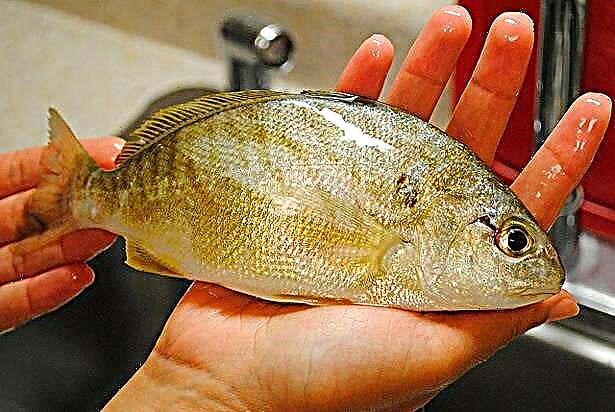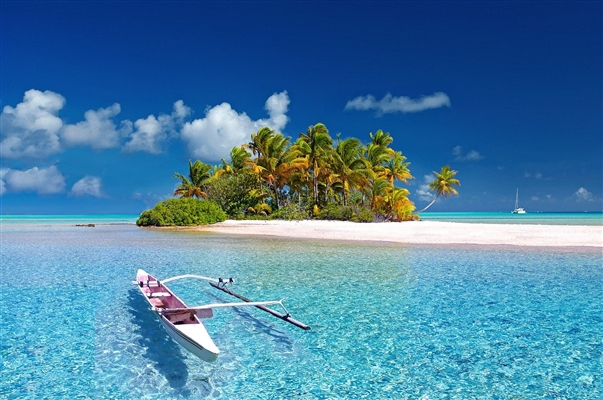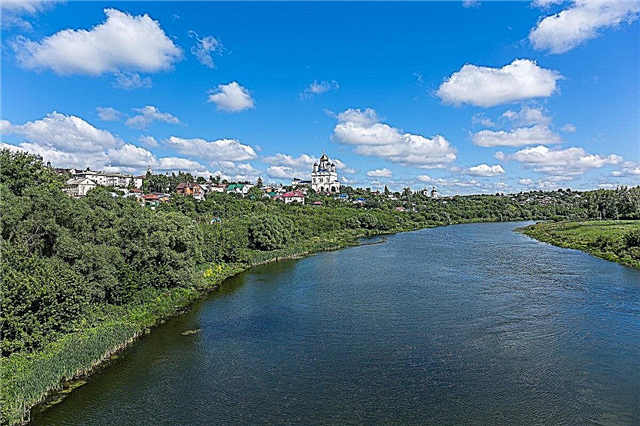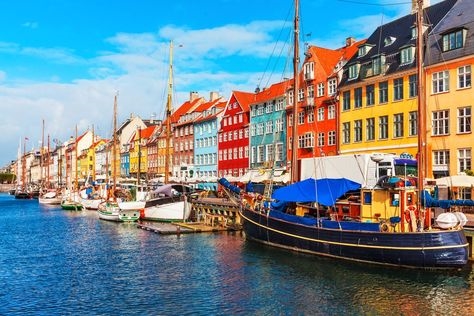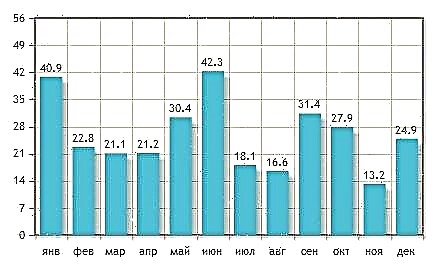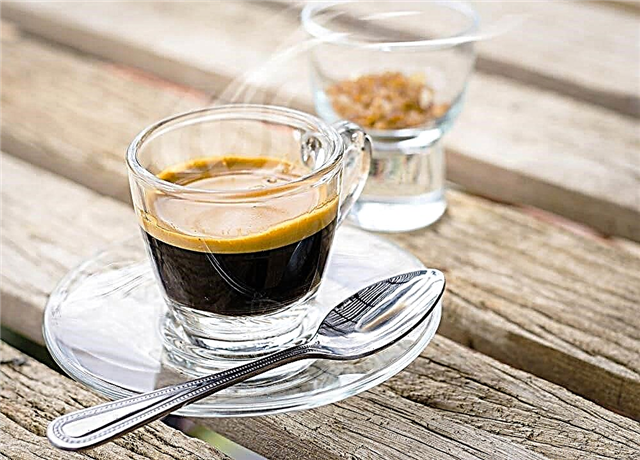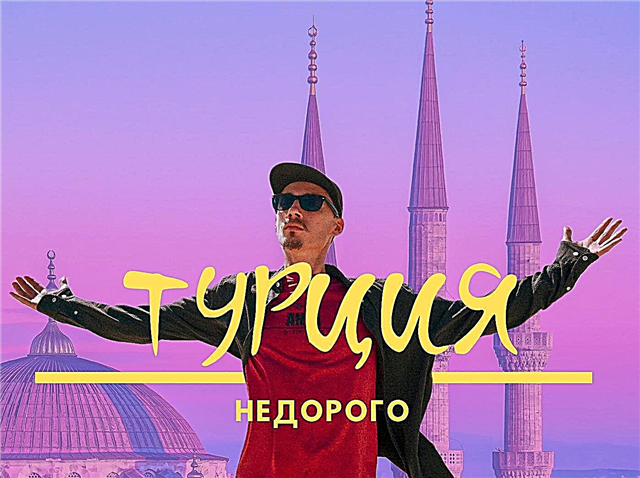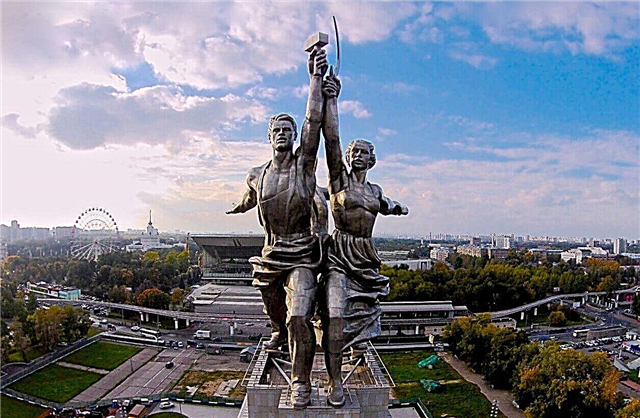Moscow, as the capital of a state with an impressive history, is inextricably linked with many significant events and outstanding personalities. In their honor at all times in the city there were monuments for every taste. On the streets and squares, in squares and parks, you can find both monuments of the past, such as the monument to Yuri Dolgoruky, and modern ones, for example, the monument to Vladimir the Great.
The events of the Great Patriotic War, as well as achievements in the space industry, have been noted many times. Objects of the Middle Ages, such as the Execution Ground, have also been preserved. Some of the monuments are controversial, for example, the monument to Peter the Great, others have to be corrected after installation: at the "Farewell of the Slav" German rifles accidentally found in the composition were cut down. But for the most part, the sculptures delight the eyes of Muscovites and guests of the capital.
Historical and modern monuments of Moscow
List of the most famous monuments and sculptures in the city.
Unkown soldiers grave
Located at the Kremlin wall. It has existed since 1967. 30 years later, a guard of honor appeared here. The memorial includes the tomb of the unknown soldier, the alley of hero cities, the eternal flame and the stele of the cities of military glory. In the center of the composition there is a slab on which a bronze helmet, a laurel branch and a battle banner lie. Each curbstone contains earth brought from the hero cities. It is a cultural heritage site.

Monument to Minin and Pozharsky
Installed in 1818 to commemorate the 200th anniversary of the victory of Russian militias over the invaders. The first monument of the capital, before that only arches and temples were erected in honor of memorable events. The author of the project is I. Martos. Materials - brass and copper, granite pedestal. The figures of Minin and Pozharsky resemble antique statues, but there are also elements traditional for Russia. Now the monument stands at the Cathedral of St. Basil the Blessed.

Victory Monument
It is part of the Victory Park on Poklonnaya Hill. The total area of the park is 135 hectares. The project was completed by 1995. The height of the Victory Monument is 141.8 meters. The figure is not accidental: the Great Patriotic War lasted 1418 days and nights. The goddess Nike is fixed on the obelisk, and St. George the Victorious is at the foot. Also in the park there is a monument to soldiers-internationalists, the composition "Tragedy of Nations", a monument to the defenders of the Russian land.

Monument to Peter I
Built on the artificial island of the Moskva River in 1997. The total height is 98 meters, the figure of Peter himself is 18 meters. One of the tallest monuments in the country. The author is Zurab Tsereteli. It was created in honor of the 300th anniversary of the Russian fleet. The sculptural composition contains many details, including ships, flags, scrolls. The monument received many negative assessments and is considered one of the worst works of the sculptor.

"Worker and Kolkhoz Woman"
The author of the sculptural group is Vera Mukhina. Consists of female and male figures that are captured in motion and hold a hammer and sickle in outstretched hands. The monument was created for the 1937 Paris International Exhibition. Returning from there, it is installed at VDNKh. It was not restored until 2003 and was seriously damaged due to corrosion. In 2009 it was reopened. Height - 24.5 meters, weight - 185 tons.
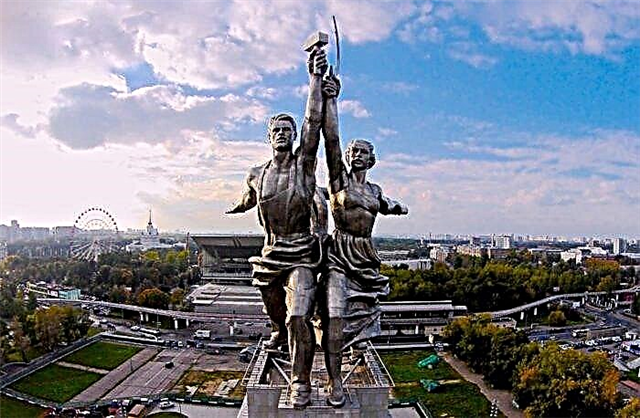
Monument to Alexander Pushkin
Opened in 1880. Initially, it was located on Strastnaya Square, which was later renamed Pushkinskaya, but on the other side. There were several variants of the monument. We stopped at the project of A. Opekushin, although the pedestal was borrowed from the concept of I. Schroeder. Pushkin stands in thought, apparently inventing a new work. He is dressed in a raincoat, and in his hand, wound behind his back, holds a hat.

Triumphal gates
In 1837, the first wooden arch was built on Tverskaya Zastava Square. Its creation was timed to celebrate the anniversary of the victory over Napoleon's troops. When the territory began to be renovated in the 30s of the last century, the monument was dismantled. It was restored in 1966, but moved to Kutuzovsky Prospekt. Since then, the triumphal gates have become reinforced concrete, decorated with granite and cast iron details.

Monument to Vladimir the Great
Built on Borovitskaya Square in 2016. It took a long time to choose a place for installation. We tried to please the public and avoid problems with UNESCO, since the organization prohibits changing the appearance of cultural heritage sites. S. Shcherbakov was responsible for the project. Height - 17.5 meters. The monument was consecrated by Patriarch Kirill. Vladimir holds a high cross in one hand, and put it on a sword in a scabbard to his friend.

To the Conquerors of Space
A monument dedicated to the achievements of the Soviet space industry was opened in the Ostankino region in 1964. A 107-meter stele with a rocket at the end rushes into the sky. Made of titanium. The Alley of Cosmonauts stretches from the monument to Ostankino Proezd. Monuments in honor of prominent representatives of Russian cosmonautics, including V. Tereshkova, P. Belyaev and A. Leonov, have been erected along the path.

Monument to Yuri Dolgoruky
Year of installation - 1954, location - Tverskaya Square. Sculptural group - S. Orlov, N. Shtamm, A. Antropov. Since it is not known what the prince looked like, the monument represents a mighty hero sitting on a horse. He points with his hand to the place where the fortress should be laid, although it is not known for certain whether it was built under him. Stalin personally accepted the version of the monument, and even made some changes.

Monument to Marshal Zhukov
It appeared on Manezhnaya Square in 1995. Authors - V. Klykov and Y. Grigoriev. Height - 6 meters. The Marshal is depicted on a horse, as he appeared at the first Moscow parade. Under the hooves of his horse is a fascist standard. It was possible to convey the appearance and bearing of Zhukov as accurately as possible. It was planned to erect a monument on Red Square, but UNESCO does not allow changes to be made to cultural heritage sites.

The Tsar Bell
It was first mentioned in 1737. Located on the territory of the Kremlin on Ivanovskaya Square. Never installed on a temple. It was cast in a special pit not far from the place where it is still located. Work on the creation of the bell was accompanied by various emergencies: from the death of the person in charge of casting to a fire. The reason for the appearance of an impressive crack is the ingress of moisture on the hot metal.

Tsar Cannon
Cast in 1586 in the Kremlin arms workshops. Originally stood at the Execution Ground. Now it is included in the funds of the Museum of Artillery Guns of the 16th-19th centuries and is installed on Ivanovskaya Square. Length - 5.34 meters, weight - a little less than 40 tons. The gun never participated in hostilities. Once she was put on alert when the Crimean Khan led the troops to the city. The kernels lying nearby are a props for creating an image.

Place of execution
The first mention is 1549. It is located on Red Square and is a monument of medieval Russian architecture. A raised circle with steps was intended for the announcement of royal decrees. It was also used in significant events for the city and during religious processions. In modern Russia, it is decorated on some dates, for example, on Victory Day.

Monument to Yuri Gagarin
It has been located on the square of the same name since 1980. Design group - P. Bondarenko, A. Sudakov, J. Belopolsky, F. Gazhevsky. Height - 10 meters. the authors wanted the monument to be visible from the Moscow Ring Road. Made of titanium. Gagarin turned out to be a little fantastic, like his feat. A copy of the Vostok ship is installed at the base of the sculpture. It was on it that the famous astronaut made the first flight into space.

"Make way for ducklings!"
It has been located in the park near the Novodevichy Convent since 1991. The sculptor is S. Nancy. The bronze sculptural composition illustrates the work of Robert McCloskey. The original was opened in Boston in 1941, and a copy was donated by Barbara Bush to Raisa Gorbacheva.After its installation, several ducklings were stolen by vandals, and Nancy resumed her work, and in 2000 a new grand opening took place.

"Children are victims of adult vices"
Opened in 2001 on Bolotnaya Square. The composition consists of 15 figures. The dark statues standing in a semicircle are adults, each representing one of 13 vices. In the center is a pair of children playing with a ball, whose figures are covered with gilding. According to the idea of the author M. Shemyakin, this is how the negative influence of the older generation on the younger is portrayed. Many disagree: the monument seems to be dedicated to vices, not children.

Monument to Yuri Nikulin (on Tsvetnoy Boulevard)
Installed on Tsvetnoy Boulevard in 2000. The composition consists of a figure of an artist and a convertible car. The sculptor Rukavishnikov wanted to create the following picture: young Nikulin had just left a parked car and was heading towards the circus. The statue of Nikulin was cast in Russia, and the car - in Italy. The initial idea was to place the monument on the roadway, but the traffic police did not give the go-ahead.

Monument to Mikhail Kutuzov
The project of the monument to the commander was planned to be implemented even before the revolution. The change of government and lack of funding prevented. The opening nevertheless took place in 1973 near the Borodino battle panorama museum. Sculptor - N. Tomsky, architect - L. Golubovsky. The commander is wearing a ceremonial uniform, he is sitting on a horse. On the sides of the massive pedestal there are bronze high reliefs. Each of the figures is distinguished by particular precision in detail.

"Farewell of a Slav"
Installed between the tracks and the building of the Belorussky railway station in 2014. Sculptors - S. Shcherbakov and V. Molokostov. Two figures - a man-soldier and a woman accompanying him - are a symbol of loyalty to each other and dedication to duty. Directly associated with the march of the same name and bears a resemblance to the sculptural composition "Farewell". After the opening, it turned out that the monument was decorated with two German rifles, which were promptly cut down.

Monument to Cyril and Methodius
It has been located on Lubyansky passage since 1992. The sculptor - V. Klykov, the architect - Y. Cyril and Methodius are holding a cross, which is higher than their height, a scroll and a writing. Despite the fact that the monument is dedicated to Slavic writing, several mistakes were made in the inscriptions on it, a letter in the alphabet was missing, the title was not used. This did not prevent the composition from becoming a cult. A festival of Slavic culture is held near the monument.

Monument to Alexander Suvorov
Stands on the square of the same name. The Suvorov School is located nearby. Opened in 1982. Sculptor - O. Komov, architect - V. Nesterov. The height of the sculpture together with the pedestal is about 4 meters. Suvorov is dressed in a uniform, in his hands he has a telescope, and an order on his chest. The authors managed to achieve a portrait resemblance and give the commander's features the charm that was characteristic of him in reality.

Monument to Vladimir Vysotsky
Installed on Strastnoy Boulevard in 1995. The author of the project is G. Raspopov. Vysotsky has a guitar behind him, arms outstretched, and he looks into the sky. Once Vladimir Semyonovich said that he would never be erected at the Petrovsky Gate. Apparently, refuting this thesis, they chose a place for the sculpture. On the birthdays and deaths of the singer, fans of his work gather near the monument.

Monument to Alexander II the Liberator
The opening took place in 2005. It is located near the Cathedral of Christ the Savior, facing which it is turned. The place was not chosen by chance: the emperor contributed to the construction of the temple. The creators of the monument are A. Rukavishnikov, I. Voskresensky, S. Sharov. Alexander II is wearing a military uniform, and behind him are a pair of lions and a colonnade. He is called the liberator for a number of reasons, including for the abolition of serfdom.

Monument to Vladimir Lenin
The sculptural composition was installed on Kaluzhskaya Square in 1985. Authors - G. Makarevich, L. Kerbel, B. Samsonov, V. Fedorov. The tallest and most massive monument to Lenin in the capital. Its height is 22 meters. Cast in St. Petersburg from bronze. At the base of the pedestal are numerous figures of soldiers, sailors and workers. Among them, a woman stands out against the background of the flag - a symbol of the revolution.

Monument to Vladimir Mayakovsky
The installation took place in 1958 on a square named after the poet. Sculptor - A. Kibalnikov, architect - D. Chechulin. The monument was laid before the war, but the work stopped for a while. Bronze Mayakovsky stands on a granite pedestal in an open jacket, and seems to be reading poetry. Since its opening, the monument has attracted the attention of poetry lovers who have arranged meetings here.

Monument to Fyodor Dostoevsky
Located at the Russian State Library since 1997. Rukavishnikov. The monument is made of bronze and placed on a granite pedestal. Dostoevsky is depicted in an uncomfortable position. By this, the author of the project wanted to express the writer's inability to find a place for himself among the ordinary, his desire to dig deeper. The folk names for the composition are “a monument to hemorrhoids” and “at the proctologist's appointment”.

Monument to Alexander I
Year of foundation - 2014. Location - Alexander Garden. Authors - S. Shcherbakov and I. Voskresensky. The emperor was portrayed in full dress with a cloak thrown over and a sword in his hands, and an enemy weapon under his feet. Bronze bas-reliefs refer to important milestones of the reign of Alexander I. Among other things, they show the events of Borodino and other battles of the Patriotic War of 1812.

Monument to Bulat Okudzhava
Installed in 2002 in Plotnikov Lane, not far from the place where the poet lived. The sculptor is G. Frangulyan. A bronze figure 2.5 meters high is located in front of a small arch - part of the composition. This arch personifies the Moscow courtyard of the recent past, the lost atmosphere of the city. Critics rated the monument unsatisfactory due to its appearance and inconsistency with the image of Okudzhava.
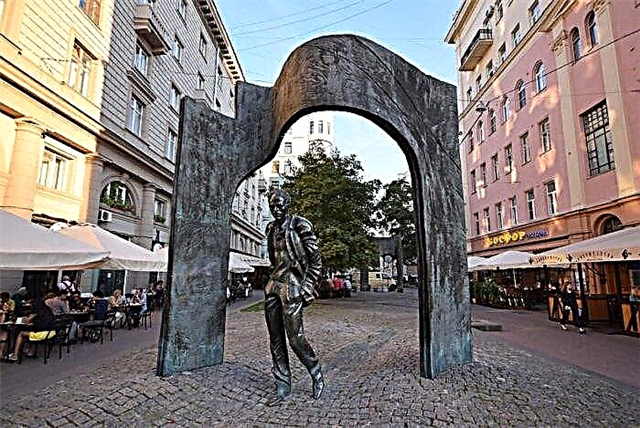
Monument to Alexander Griboyedov
Opened on the 130th anniversary of the death of the writer in 1959. A. Manuilov and A. Zavarzin were responsible for the project. Chistoprudny Boulevard was chosen as the installation site, since Griboyedov lived not far from here on Myasnitskaya Street. The monument stands on a high pedestal with a half-open screen. At the bottom of it are the heroes of the most popular work of the writer "Woe from Wit".

Monument to Pyotr Tchaikovsky
The project was entrusted to Vera Mukhina, who had previously made a bust of the composer. She wanted to portray Tchaikovsky full-length and conducting. But this option required a lot of space and was abandoned. The finished monument could not pass all commissions for a long time. As a result, the sculpture of the composer in a sitting position appeared in front of the Moscow State Conservatory in 1954.

Monument to Muslim Magomayev
Located in a park named after the singer. The installation site is located near the Azerbaijani embassy and from the apartment where Magomayev lived. Author - A. The opening took place in 2011. The artist's widow insisted that the authors portray Magomayev as young, because this is how he was remembered by the audience and listeners. The figure of the singer was installed on a pedestal. The total height of the composition is 4.5 meters.

Monument to Nikolai Gogol
Located on the boulevard of the same name. Opened in 1952 on the hundredth anniversary of the death of the writer. At this place, another monument to Gogol had already stood, but it was moved to the memorial house-museum. According to one version, Stalin did not like the previous monument, and it was he who insisted on replacing it. The leader did not want to see the "mournful" figure when he was driving from the Kremlin to his dacha. This is how the "cheerful" Gogol, by the sculptor N. Tomsky, appeared.

Monument to Sergei Yesenin
Installed on Tverskoy Boulevard in 1995. Bichukov. The figure of Yesenin is cast in bronze, and the pedestal with steps is stone. The look that was given to the poet is characterized by the phrase "wide open soul". He is depicted in a relaxed position with his shirt unbuttoned. Pegasus is located nearby - a reference to the name of the cafe, where representatives of the Silver Age often gathered.

Monument to Taras Shevchenko
Founded in 1964. Responsible for the project was Yu.Sinkevich, A. Fuzhenko, M. Gritsyuk. For a while, he left his usual place near the hotel "Ukraine", as he was under restoration. He returned in 2014. The bronze statue is 5.6 meters high. The sculptors tried to give the poet a "winged" look. To do this, he was dressed in a lion-coat overcoat, and also installed on an unusual elongated pedestal with a dais.


